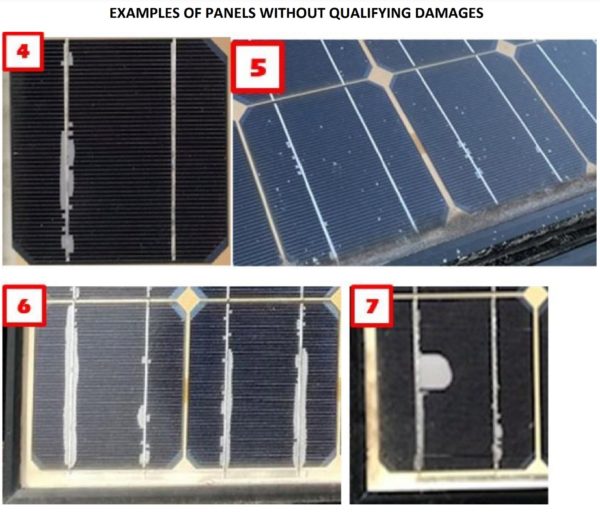A class action lawsuit filed against Sanyo and Panasonic was settled last year with the ruling coming down to the solar panels not generating the electricity as projected, due to a physical defect. The panels were manufactured and sold by Sanyo, but later settled by Panasonic via the class action lawsuit in 2019.
The lawsuit suggests that a series of Sanyo solar panels would delaminate on the front side of the solar panel, greatly affecting the electricity generation. The law firm’s press release notes:

The solar panels in question are the model series HIP-xxxBA2, BA3 and BA5. A specification page of the HIP-XXX-BA3 series can be found here. The specification page notes its copyright date is August 10, 2006.
The lawsuit’s website hosts several documents, but the filings note that since the settlement happened behind closed doors, there are no details on the discussions that took place or facts that were revealed. The only technical information describes when delamination counts, and doesn’t count.
Solar panels must show visible “delamination” in order to be eligible for payment under the settlement. This includes one or more adjacent sections of circular delamination where each section is 25 mm or greater and was not caused by external damage. Linear or dot delamination is not covered by the settlement.
To receive benefits, a claim must be received either prior to December 31, 2029 or no more than twenty years after having purchased the solar panels. Panasonic, who owned the Sanyo product line at the time of the suit, can choose to either pay solar module buyers a prorated depreciated dollar amount (based on the original purchase price), or replace the solar panels with new or refurbished products.
Multiple references suggested that the solar panels cost about $700 each when originally sold.

One fact is completely transparent, and that’s who made money from this class action suit. The plaintiff, Richard Ziccarello, the individual who represented the class action lawsuit, was awarded $5,000. Richard can also submit for a refund on the damage to his own solar panel system.
The law firm representing Richard was awarded $1.745 million in attorneys fees and costs.
This was amended on July 27, 2022 as the lawsuit had been settled previously. The information was obtained from topclassactions.com.
This content is protected by copyright and may not be reused. If you want to cooperate with us and would like to reuse some of our content, please contact: editors@pv-magazine.com.








By submitting this form you agree to pv magazine using your data for the purposes of publishing your comment.
Your personal data will only be disclosed or otherwise transmitted to third parties for the purposes of spam filtering or if this is necessary for technical maintenance of the website. Any other transfer to third parties will not take place unless this is justified on the basis of applicable data protection regulations or if pv magazine is legally obliged to do so.
You may revoke this consent at any time with effect for the future, in which case your personal data will be deleted immediately. Otherwise, your data will be deleted if pv magazine has processed your request or the purpose of data storage is fulfilled.
Further information on data privacy can be found in our Data Protection Policy.